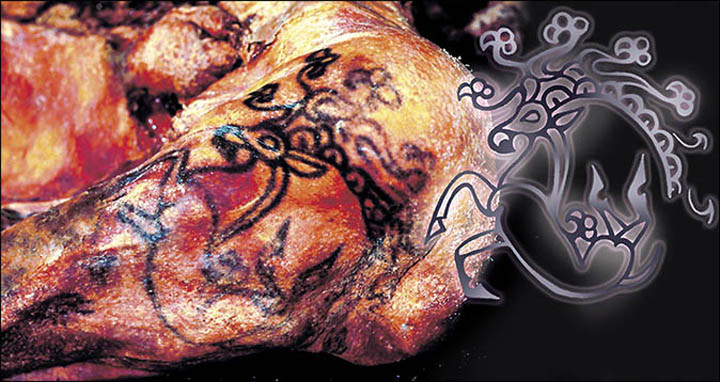Ancient Siberian Princess Died From Breast Cancer and Smoked Cannabis to Ease Pain

An MRI scan of the mummified remains of a 2,500-year-old Siberian princess has revealed that she died after suffering from acute breast cancer.
The mummy, known as 'Princess Ukok' or the 'Siberian Ice Maiden', was believed to be part of the Pazyryk nomadic tribe mentioned in 5th century BC by Greek historian Herodotus.
Her body was discovered in 1993 by Russian archaeologists, who uncovered her tomb beneath the permafrost in the Altai Mountains, containing fine clothing, jewellery, headdresses, a make-up bag, a stash of cannabis, plus six saddled and bridled horses.
Her body is also famous for its elaborate and extremely well-preserved tattoos.
Scientists Andrey Letyagin and Andrey Savelov, from the Russian Academy of Medical Science in Novosibirsk, conducted MRI scans on the princess and found that since a young age she had been suffering from an infection of the bone marrow called osteomyelitis.
It was also shown that just prior to her death she suffered from a fractured skull and some dislocated joints, consistent with a fall from a horse.
Although scientists believe it is possible that she died as a result of her injuries, it was clear from the scans that breast cancer could have been the ultimate cause of her death.
"I am quite sure of the diagnosis - she had cancer. She was extremely emaciated. Given her rather high rank in society and the information scientists obtained studying mummies of elite Pazyryks, I do not have any other explanation of her state. Only cancer could have such an impact," Letyagin said in his analysis, according to The Siberian Times.

The studies of her body found that in her right breast and right axial lymph nodes, there was a primary tumour with metastases.
There was also a decline in the condition of three of the vertebrae in her spine, a further indication of the metastatic cancer process.
Archaeologists believe that it is likely she took cannabis for the pain she was in, as it was a known analgesic for this period.
"In ancient cultures, from which there is a written testimony, such analgesics were used," said Natalia Polosmak, the scientist who first found the burial tomb. "Wine, hashish, opium, henbane, an extract of mandrake, aconite and Indian hemp. The Pazyryks knew hemp and its features."
Even though she is commonly referred to as 'princess', researchers believe that she may have actually been a shaman who gained an 'altered state of mind' through her use of cannabis, leading her kinsmen to believe that she had special powers.
"Probably for this sick woman, sniffing cannabis was a forced necessity. And she was often in altered state of mind," said Polosmak. "We can suggest that through her could speak the ancestral spirits and gods. Her ecstatic visions in all likelihood allowed her to be considered as some chosen being, necessary and crucial for the benefit of society. She can be seen as the darling of spirits and cherished until her last breath."
© Copyright IBTimes 2025. All rights reserved.





















